#Native Olive Tree
Explore tagged Tumblr posts
Text
#Agricultural Sustainability#Biodiversity#Culinary Delights#Eco-Friendly Practices#Healthy Eating#Mediterranean Cuisine#Native Olive Tree#Olive Farming#Organic Agriculture#Sustainable Growth
1 note
·
View note
Text
#Agricultural Sustainability#Biodiversity#Culinary Delights#Eco-Friendly Practices#Healthy Eating#Mediterranean Cuisine#Native Olive Tree#Olive Farming#Organic Agriculture#Sustainable Growth
0 notes
Text
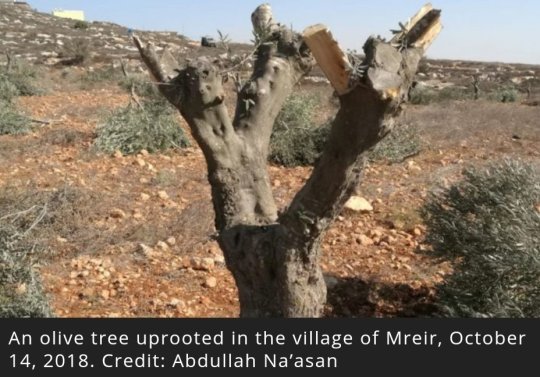

#free palestine#israel#palestine#news#native americans#usa#genocide#trees#olive trees#democrats#republicans#politics
517 notes
·
View notes
Text
enough is enough actually. how much more. the usa is breeding ground for world terrorism. no more. we don’t want it anymore. bring back culture>capitalism
#we dont want your weapons we dont want this animosity you create#we want peace again. we want all the artifacts you destroyed in iraq during the war. we want all the women you raped in afghanistan#palestine wants their olive trees back. the native americans want their land back.#congo and sudan want to liveration from mining stuff forbur cars and phones#hell country. the world is better without it
5 notes
·
View notes
Text

Queen Anne's Lace smells vaguely carrot-like. Funny enough, it's also native to Eurasia and invasive to the Americas.
learning about plants in ur area is wild. like you also learn about the histories of the plants. Like oh! Thats garlic mustard! That was brought over from europe as a crop! it smells just like garlic and you can cook with it! And thats yarrow! Its been used for tons of stuff and pollinators love it! Oh hey! Thats hemlock! They killed Socrates with that!
#however knowing the invasive species kind of does suck#we have SO MUCH autumn olive because the DNR planted it for wildfire control (????)#and it's taking over everywhere blocking out native shrubbery and trees#on the bright side sheep LOVE killing autumn olive by eating it to death#we also have swallowort (sp?) that kills monarch and ... well sheep if they ate it but they don't#but it's still dangerous to have around#we could like happily live in ignorance tho
28K notes
·
View notes
Text
Vanessa Chakour: My Innate Connection to Stolen Land
Red oak and red maple populate the living landscape of Mount Owen in the Northeastern U.S., along with birch, white pine, and beautiful old sugar maples. Native medicinals like common violet and rare blue cohosh flourish in the understory. Spicebush rims a vernal pool while goldenrod blooms around the forest edge. Otherworldly mushrooms like the reishi, oyster, and turkey tail mushrooms emerge…
#Charles R. Warren#foraging#Indigenous people#Irus Braverman#Israeli occupation#Layla K. Feghali#native Americans#olive tree#Palestine#Settler Colonialism#Vanessa Chakour
0 notes
Text
this is actually melting my mind how unfathomably evil it is
#intentionally planting invasive species to erase native palestinian wildlife is CRAZY#committing genocide on the indigenous palestinian people is not enough#the IOF must erase all traces of them; linguistically and in WILDLIFE LIKE THAT IS INSANE. ive heard about the removal of olive trees but#not this. its crazy to me about the olive trees because that is just symbolic brutality. like that seems so purposeless other than to seed#hopelessness in the palestinian people that they're colonizing. god its just so so evil#learning about bioterrorism is so fascinating it is so fucking awful and pointless and just a net negative for everyone
1 note
·
View note
Text
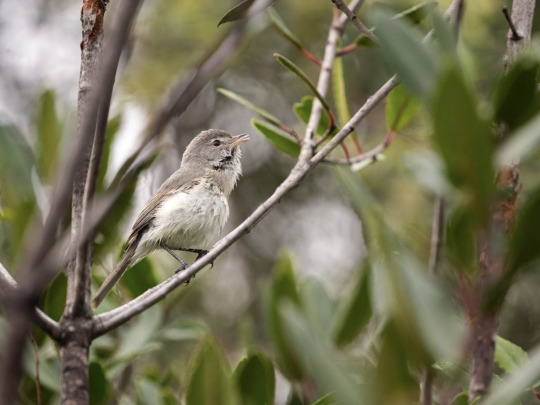
A least Bell’s vireo (Vireo bellii pusillus) sings at Taylor Yard on March 22. California placed this songbird on its endangered species list in 1980, but this rare vireo has recently returned to central L.A. thanks to habitat restoration and the return of the natural riparian ecosystem along a section of the Los Angeles River. Alecia Smith / Audubon California
Excerpt from this story from the Smithsonian Magazine:
Along a gentle bend of the Los Angeles River, in a stretch of land called Taylor Yard, a sound like a high-pitched record scratch can just be heard above the cacophony of city life. This is the call of the least Bell’s vireo, an olive-gray songbird that is only five inches from tip to tail. The riparian species native to Southern California has lived an endangered existence for more than 40 years. Now, the small bird’s return here symbolizes a new future for one of the country’s most maligned waterways.
Before the concrete tide of urbanization washed over the Los Angeles River Basin, the river-fed wetland that was here represented the perfect habitat for this rare species. But for the past century, this area was one of the largest rail yards in the region, and as an expanding city grew right up to the river’s now concrete-laden banks, the vireo all but disappeared.
Until, suddenly, it returned. The 2007 creation of Rio de Los Angeles State Park, which is itself part of the sprawling rail yard, set the stage. In the early 2010s someone reported hearing the vireo’s memorable call. A few years later, a photo captured a vireo mid-song, and in 2022 a nesting pair took refuge in a tree. This year, the news was even better.
“We actually saw fledglings,” says Evelyn Serrano, the director of the Audubon Center at Debs Park in Los Angeles. “We saw the nest and we saw the babies, so we were very excited. It’s tough to survive in an urban environment when you’re a little bird like that, but it’s definitely possible.”
The return of the least Bell’s vireo shows what’s possible along a more natural Los Angeles River, and Taylor Yard represents the city’s largest opportunity to create vital habitat for many of its vulnerable endemic species. For years, a partnership of government groups and nonprofits has pushed to make the remaining 100 acres of the abandoned rail yard the “crown jewel” of L.A.’s river restoration project. The resulting collective, known as the 100 Acre Partnership, hopes to complete the restoration by 2028, which is just in time for the L.A. Olympic Games. The project is just the latest effort to create a new vision of Los Angeles that’s been in the works for nearly a century.
1K notes
·
View notes
Text
19 JANUARY 25
𓂀 PUNARVASU NAKSHATRA EXPLORATION .

🌈 PUNARVASU ELEMENTS .
punarvasu spans 20°00 gemini - 03°20 cancer. its vimshottari ruler is jupiter.
punarvasu's deity is aditi - mother of the adityas, goddess of earth, harvest and fertility. her name means 'boundless' or 'limitless' and she is the embodiment of the infinite and vast cosmos.
punarvasu nakshatra is the 'star of renewal' and has several meanings, some being "good again", "prosperous again", "light again" and "the return of the light".
its symbols are the bow and quiver of arrows and a house.
punarvasu's shakti is vasutva prapana shakti meaning the power to 'gain wealth and substance'.
punarvasu's basis above is air or wind and its basis below is moisture or rain. its desire is 'to produce herbs and trees'.
🌈 PUNARVASU THROUGH MYTH .

mrigashira is the birth of mars and where polarisation, competition and temptation are born. in the bible, we see this with eve biting the apple and adam and eve realising they were naked.
this leads to ardra when adam and eve are finally cast out of the garden of eden and left to their own vices. ardra is the star of effort and represented by a teardrop. outside the garden, they learn of true suffering and man is condemned to pain and to "till the earth" for ever. claire nakti corresponded the tower of babel to ardra, and the creation of the tower of babel is what sets off the events in the punarvasu stage: noah's ark.
god feels like there is too much evil in the world and so he decides to renew the earth and then the earth is just vast seas due to the copious amount of rain and flooding. punarvasu is the star of renewal and aditi is the goddess of primordial vastness. noah and his family were deemed worthy enough to be saved and noah was tasked with building an ark big enough to house one pair of each animal on the earth. another one of punarvasu's symbols is a house.
punarvasu's symbol is the bow and quiver of arrows archers had to release the arrow and go and get it back. noah sent out a dove to see whether the flooding had reduced and it kept coming back until one day, when it returned with an olive branch, signifying new life. punarvasu's basis above is air or wind, which relates to the dove flying to see whether the floods had reduced enough and its basis below is moisture or rain, which relates to the vast floods used to cleanse the world of evil. punarvasu's desire is to produce herbs and trees, which is symbolised by the dove bringing back an olive branch to show the floods were over - later becoming a symbol of peace.
after the whole ordeal, god placed a rainbow in the sky to symbolise peace and as a promise that a flood like that would never happen again.
🌈 PUNARVASU IN POP CULTURE .

mariah carey, punarvasu moon
punarvasu themes are all over mariah's career. @vindelllas noticed that butterflies are linked to punarvasu natives, relating to their transformative nature, and mariah carey's first album that she had creative control over was called "butterfly". this album is also deemed her magnum opus. her album after butterfly is called "rainbow" and mariah also has a song called "through the rain". the theme of renewal and "prosperous again" arises with her 2005 album "the emancipation of mimi", which invited immense success and earned her the moniker "the queen of the comeback".

kali uchis, punarvasu sun
kali uchis is another punarvasu native whose music reflects a lot of punarvasu themes. her song after the storm is highly punarvasu and even reflects the noah's ark floods with the lyrics "cause after the storm's when the flowers bloom". the entire song is punarvasu coded and everyone wanting to understand punarvasu themes should go and listen to it.
she uses a lot of flower imagery in her music and has a song called "i wish you roses" and an entire album called "orquídeas" (orchids in spanish). she also used butterfly imagery on her album cover for "red moon in venus".

penelope cruz, punarvasu moon
penelope cruz starred in the movie volver, meaning "to return" in spanish and is about a dead mother who comes back to life. (ps. i haven't watched this movie yet, but the theme of renewal and returning is very punarvasu).

natasha lyonne, punarvasu moon
natasha stars as nadia in russian doll, a show in which she dies and keeps coming back to life to relive the same day over and over again. this theme of reliving the same day seems to be quite punarvasu, and also extends to the other jupiter nakshatras.

franka potente, purva bhadrapada jupiter atmakaraka (trine nakshatra)
lola, played by franka potente, has to find 100,000 deutsch marks in 20 minutes or her boyfriend will be killed by gangsters. each time she fails, she restarts the day again, playing on the punarvasu theme of repetition and renewal. the movie also discusses the butterfly effect, which is also very punarvasu.
the director of lola rennt has purva bhadrapada saturn as his atmakaraka.

eva green, punarvasu sun
eva green plays miss peregrine in miss peregrine's home for peculiar children. she takes on a motherly role and provides a home for these peculiar children and rewinds time to stop a bomb from destroying the home. all inhabitants are essentially stuck reliving the same day over and over again. punarvasu's symbol is a house and its deity is aditi, the mother goddess.
. * . ⁺ .⁺ ˚ . * . ⁺ .⁺
© 2025 opalblade. do not copy, repost, or translate my works to any other platforms.
#✧ / opalblade originals .#vedic astrology#astro notes#astro observations#astroblr#astrology#vedic astro notes#vedic astro observations#vedic chart#punarvasu#punarvasu nakshatra#✧ / opalblade on punarvasu .
345 notes
·
View notes
Text
Palestinians are willing to die for this land because they are native to it. If Israelis were native, they wouldn't bomb it to turn it into a tourist spot. They would have preserved the ancient buildings, the olive trees, and protected the land. Indigenous people protect their land, remember, settlers do not.
#free palestine#gazaunderattack#gaza#palestine#pray for palestine#free gaza#palestinegenocide#palestinians#save palestine#palestine will be free#i stand with gaza#save gaza#news on gaza#gaza genocide#gazaunderfire#stand with gaza#gaza strip#war on gaza#stop genocide#genocide#palestinelivesmatter#we stand with palestine#i stand with palestine#we stand with gaza#human rights
1K notes
·
View notes
Note
Hi! Hope this is okay to ask. I wanted to make some sort of visual art for Palestine today, but I was wondering if there's a particular native wildflower in Palestine that you think is nice, or would be good for a drawing?
So actually Red Poppies are really big in Palestinian imagery, the national flower is sawsan faqoo'ah (Iris Haynei) which I know is in Jenin. There's also assa r'ai (The Sheppard's Stick).
Red Poppy:
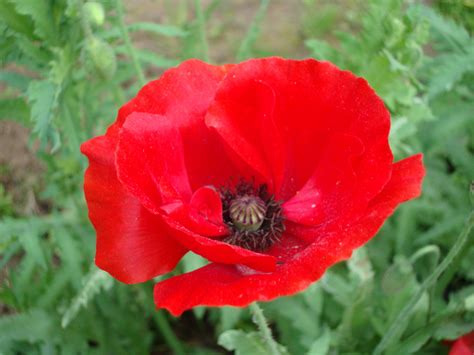
Sawsan Faqoo'ah:
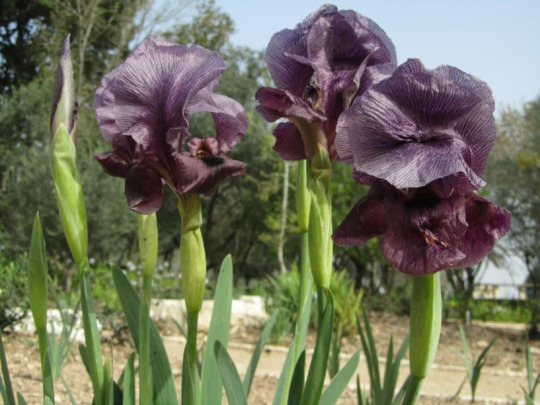
'Assa Ra'i:
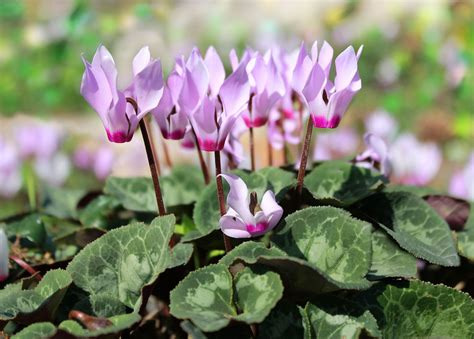
There's also Olive Trees, pomegranates, wheat, fig trees that are big in imagery!
Here's a seed library project for farmers/growers who are interested in this as well:
928 notes
·
View notes
Text
Like you can't be all for Landback in Turtle Island and then somehow think zionism & the state of Isntreal is a "landback movement" where some of the tenants are that 1. Landback doesn't mean creating an ethnostate (which Isra*l has been trying to do & this was the goal of the State from the beginning) 2. Landback does not mean or require or encourage Kicking everybody else out (which Isntreal is trying to do with the Palestinians and has been doing since 1948 and its government has been saying they explicitly want to do) 3. Landback does not encourage or require "Reverse colonizing" or committing genocide against the settler or any immigrant population (which Isntreal has repeatedly done, is doing, and wants to continue to do, so even if you think that Israelis are "Indigenous" and that the Palestinians or "Arabs" weren't, this is still going directly what Landback is explicitly against) 4. Reintroducing Native plants & wildlife to the area to undo effects of colonization in the ecosystem (& Isntreal has been planting invasive plants to the Levant, colonization has killed off Native species such as the Palestinian crocodile, and made it illegal for Palestinians to forage culturally important plants like Za'atar, the uprooting of Olive trees, or collect RAINWATER under the premise of "ecological preservation" in the same way that National Parks were created specifically to disenfranchise Native Americans under the guise of "ecological preservation", not to mention the terrorizing of Palestinians with bombs & has been polluting the area)
You have to be a special type of stupid & brainwashed if you think the latter is "Landback" when the State is literally doing everything that the Landback movement has specifically said its against
631 notes
·
View notes
Text
I reblog a LOT about Palestine, but I haven't said too many of my own personal thoughts because of my respect for their voices over mine. However, on this subject I will speak, because I have seen it happen where I live.
Israel CHOOSING to destroy Palestinian ecosystems in the Levant to "make the Desert green" is proof that they have no claim to indigeneity in that land. People who love a place and belong to a place do not make it look like someplace else. There is no ownership of land that can ever be more legitimate than the preservation of its ecology and a culture that is built around that ecology, no matter how much blood is spilled to own it.
Let it be known above all else that the freedom of Palestine is not just for her people but her land, her wildlife, her weather, her climate, and her innate beauty that cannot be taken or destroyed. The plants Israelis are trying to grow DO NOT survive there. You see olive trees growing from the carcasses of imported oaks, maples, poplars, alders, ETC.
And olive trees are fucking tough. They do survive very well in our Arizona deserts (and they are invasive here, so please stop planting them). They get struck by lightning and just keep growing.
I love you, Arizona. I love you, Palestine. I love you, every ancient desert of the world. I'm sorry to the forests who are becoming deserts because of colonizer's greed. You deserve to be what the land you live on made you, and nothing else.
If you're an immigrant to a place, colonizer or not, it's your duty and your privilege to love that place for what it is and what it can provide you. It will always be more than you can fathom.
(If you belong to any indigenous desert culture, please feel free to add on to this with any added information and I will reblog literally all of it.)
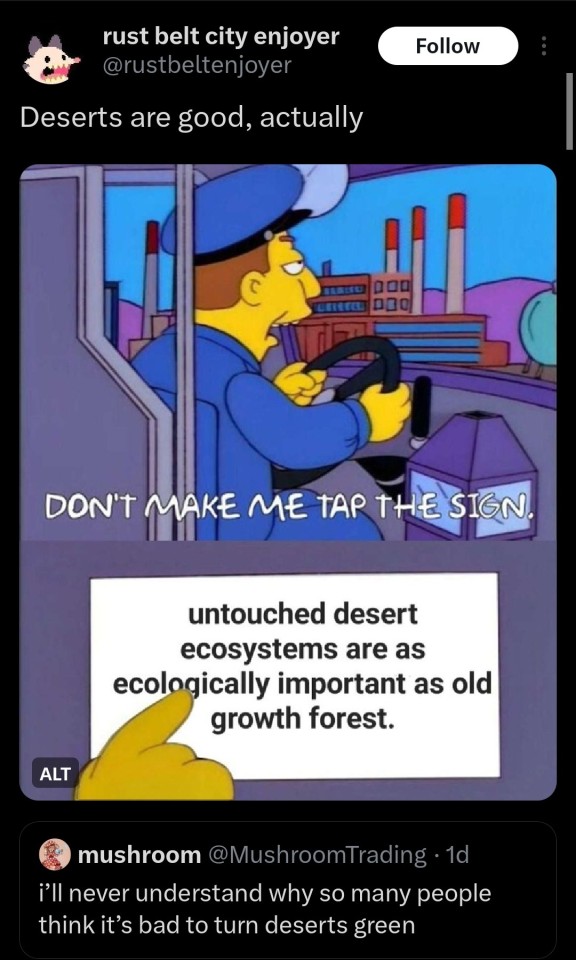
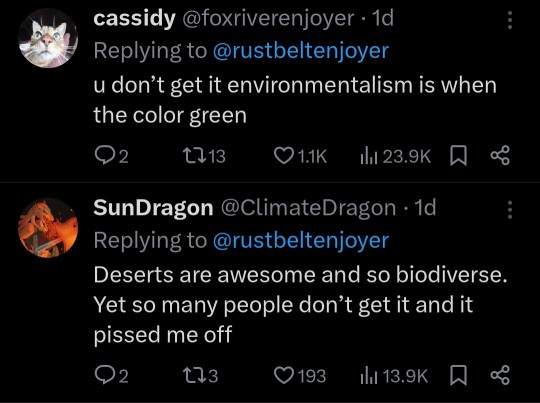
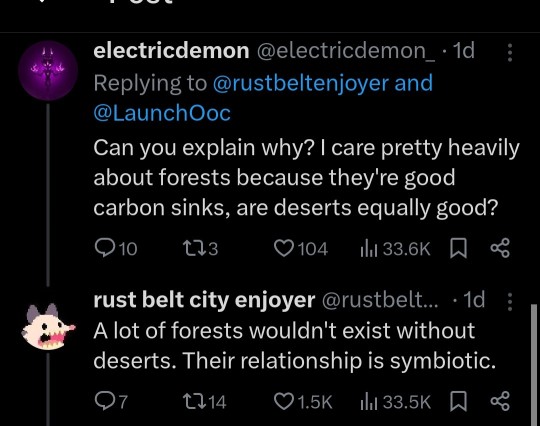
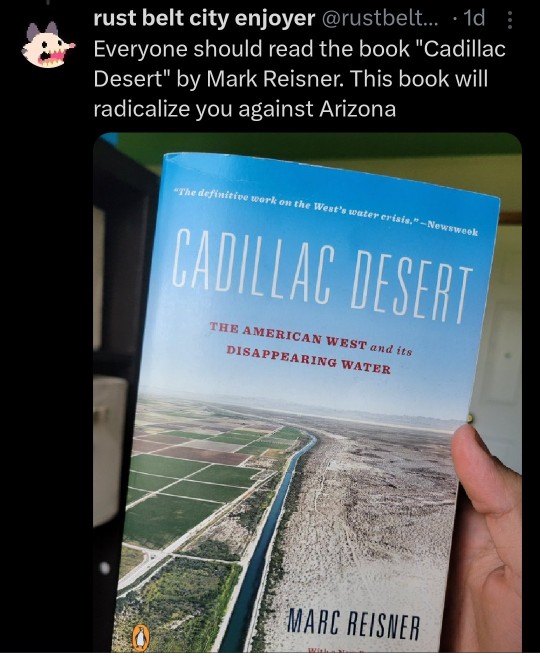
#free gaza#gaza genocide#desert ecology#desert landscaping#arizona#phoenix arizona#ecology#weather#invasive species#levpol#plantblr#please stop growing olives in arizona ffs#they're beautiful trees but they aren't native to here and they're strong as hell#if you want pretty trees plant ironwood or palo verde or something#is mesquite native to here?#those are pretty and they drop just as many seed pods as the fucking olives do#i love you olive trees i'm sorry you really should not be here#if i could keep you as an indoor cat i would
23K notes
·
View notes
Text
Ko-fi prompt from @becauseforoncethisisme:
I don’t understand how importing and exporting works and I’m trying to write a story that doesn’t have colonialism but does have chocolate and vanilla and coffee available to everyone and it’s set in fantasy Spain so I can’t grow them locally. If that fantasy Spain is trading with the people who produce chocolate and vanilla and coffee as equal partners, then how do they import enough stuff to make it readily available, and could they export things like olive oil and wine in exchange or would that not work?
Honestly, my first reaction was 'this is a very Western perspective on international trade.'
We have a few questions to ask here:
What do we mean by "readily available?"
What are the barriers in place that prevent domestic production in a fantasy setting?
What are the logistical barriers to trade that impede international trade in a fantasy setting?
What are the labor and production conditions in these countries that are uncolonized?
What are substitutes that could feasibly be present?
Readily Available
There are varying degrees of availability that one may consider here. A rough spectrum would be:
Unavailable -> Expensive Luxury -> Affordable Luxury -> Generic/Staple -> Cheap Junk
We are very used to, at least in the US and similarly wealthy nations, having some of these available as Cheap Junk. Vanilla is an affordable luxury, Coffee ranges from cheap to affordable luxury but tends to sit at Generic in the public conscious, and chocolate is a Cheap Junk item that can enter Affordable Luxury, but by god do we have it at the dollar store if you're willing to put up with immense amounts of sugar and saturated fats as a filler.
Vanilla is, actually, unlikely to change much, but that's due to the fact that it's an expensive flavor already. It might move from Affordable to Expensive, but in the real world, vanilla beans are incredibly limited in agriculture, as they are difficult to grow outside of Madagascar or Mexico due to the pollinator requirements. This is also the main focus of question five, as it's the one most likely to be substituted for with a cheaper substitute; synthetic vanillin can be derived from clove oil.
The other two, you could expect to move up at least one tier into Generic or Affordable Lux, but possibly to Expensive Lux dependent on the next factors and how quality the items are; it's very easy to stretch chocolate if you're willing to cut corners. The products would be more expensive, but not unavailable... kind of like when I go looking for imported foods from Eastern Europe.
Domestic Production Barriers
This is a fantasy setting, which means there must be a cause for not being able to grow something domestically. For vanilla, a tropical plant, the primary barrier IRL is pollinator requirements. In its native Mexico, it is pollinated by a specific bee, and outside of Mexico, it must be pollinated by hand, which is what they do in Madagascar. Since Madagascar is one of the few countries where that labor is affordable...
Then again, maybe fantasy Spain has the magic to make that work without immense amounts of underpaid labor.
Coffee and cocoa are less specific in practice, but still require tropical climates that make farming in other zones difficult at scale. You can have a greenhouse at that temperature, but it's not really viable, financially.
It's also plausible that, without colonization, the origin countries have refused to allow live seeds to exit the country, in order to maintain control over production. Can't grow your own cocoa trees if you never get a live seed to plant, right?
Logistic Trade Barriers
What is international travel like for your setting? How long does it take to get from point A to point B? What are the options for transport at scale? Do you have cargo ships, cargo planes, long-haul trucking? Is teleportation a thing? Does the transport require some kind of fuel and, if so, what is the cost of that fuel? How many humans are needed to man the transport, or is it largely automated?
Are there domestic industries that feel threatened, like spice companies that import cinnamon from SE Asia and would like to avoid the cocoa coming out of South American farms? Would they lobby the government to institute barriers, or act as a guild?
Are there political barriers, like tariffs? Wars that are liable to disrupt supply chains? Black markets that spring up to avoid customs?
Production Conditions
So. A country does not need to be a victim of colonization to be built on cheap, underpaid, labor, or even slavery.
The Aztec Empire had slaves before Europe arrived. China was never actually colonized by Western powers; at most, they ceded small amounts of territory for a temporary period. You could argue they were colonized by Huns and Mongols, but those assimilated in. Nepal, Japan, and Thailand have never been taken over by another power, though they occasionally lost territory or were forced into trade.
It is entirely possible, even likely, that the countries Fantasy Spain trades with are abusing their own people for cheap labor. If there is any degree of a class system where nobility and peasantry exist, especially if there's slavery, then you will have cheap products being exported for the upper classes. China was never taken over by the West, but the silk and spice trades were booming in part because of cheap labor under Imperial rule, and then again under communism. The Aztecs were running farms on slave labor before Spain got there. Nepal is still incredibly poor compared to the West, which is why the Mt. Everest tourism trade is one that doesn't run out of employees.
Once you know what the labor conditions are like, you can decide what the cost of goods is. If there's been a peasant revolt, trade diminishes and prices go up. Good labor conditions mean lowered rates of production, and then prices are higher because of basic laws of supply and demand.
Substitutes
Vanillin is magical.
89 notes
·
View notes
Note
Correct me if I'm wrong, but from what I've heard Drift seems to be the type of person who would really appreciate the poem "Wild Geese" by Mary Oliver
Oh, you are so not wrong. You are the most not wrong. I think he’d probably adore Ranier Marie Rilke, but I can so easily see him bonding with you over Mary Oliver’s work. Once you helped him understand the context, and feelings it’s meant to evoke.
- - -
A goose is one of those feathered creatures? Class Aves?
You shake off the soft ache in your heart that you always feel, that longing for the moonlight on your wings that comes when you read this poem. You look up to find Drift watching you with an intent curiosity.
Belatedly, you remember he can literally sense how you’re feeling. What must he think of you, what must he be feeling from you now? Can he relate to it? Or is it something that doesn’t translate? Knowing English from a download isn’t the same as being a native speaker, or at least a member of the species that cobbled it together. And there's so much about Earth that he's still learning. So much about him that you're still learning.
You let your fingers ghost over the words on the page. Yes. A goose is a bird. They migrate, the wild ones do. So you’ll see groups of them flying in vee-formation, and they honk to each other to communicate while they’re flying.
Drift is patient. Interested. Trying to understand.
What does that have to do with …goodness? Repentance? His voice is soft. You're still coming to terms with the idea that a creature made of metal can have such delicate inflection.
You’d only meant to share some human art with him, but there’s a certain subtle thrum to his engine that makes you think that this poem has caught his eye - optic - for a reason. Fortunately, you're as patient as he is in this joint venture of trying to bridge the distance between you.
Mary Oliver was known for drawing on themes of nature and the natural world, and tying that to our own lives. Our own natures. Showing that we are as much a part of the world we live in, as any other wild creature. That we inherently belong here. You know? "You are a child of the universe no less than the trees and the stars; you have a right to be here." That's another work I'll have to share with you sometime.
He leans over your shoulder, tons upon tons of metal and moving parts. There's nothing soft or animal about his body, but you feel him like you might a California redwood, towering and living. You've never doubted for a second, since you met him, whether or not he was a person. You just knew it as truth.
He rests a finger on your shoulder, looking at the page. You hold the book up to him, and he reads aloud,
Meanwhile the sun and the clear pebbles of the rain are moving across the landscapes, over the prairies and the deep trees, the mountains and the rivers.
What do those things mean to you? Sun and rain, prairies and deep trees, mountains and rivers?
They're parts of the world that exist for everyone. Sun and rain both come and go, like a dance. There's a saying, it rains on the just and the unjust. Prairies, trees, mountains, rivers. They don't have to be good to exist. They exist, and that's good. And we're a part of that, inherently. We belong. We don't have to fight to come home to a world that already knows us as part of itself.
You feel something shift inside yourself, and some human intuition makes you look up and up into his bright blue optics.
What does home mean to you, Drift? Why do you strive to be good?
His frame goes still and quiet. You've really hit a nerve, now. He closes his optics and bows his head, reflectively.
And what have I done to need to seek redemption.
No, you shake your head, and reach up to grasp his hand. What small part of it you can encompass. "Tell me about despair, yours, and I will tell you mine."
He opens his optics and smiles down at you. There is regret older than your entire species in it. You wonder for a moment if he really is about to open up to you about whatever's on his mind, but he seems to reconsider, and the moment passes.
He gives an exvent, and cups his hand protectively around you. So delicately, as if he doesn't trust himself the way you've come to trust him.
"Meanwhile the world goes on."
#transformers x human#transformers x reader#transformers first contact au#human distribution system#drift x reader
106 notes
·
View notes
Text
March 2025 Witch Guide
New Moon: March 29th
First Quarter: March 6th
Full moon: March 14th
Last Quarter: March 22nd
Sabbats: Ostara- March 20th
March Storm Moon
Also known as: Crow Moon(Ojibwe), Hard Crust on the Snow Moon(Ojibwe & Chippewa tribes near the Great Lakes), Hrethmonath, Lenten Moon, Little Sand Storm Moon(Zuni), Moon of the Whispering Wind(Hopi), Moon When the Leaves Break Forth(Pueblo), Moon of the Winds, Sore Eyes Moon(Sioux, Lakota & Assiniboine of the Great Plains, northern plains, & Dakotas), Sap Moon(Shawnee of Ohio & Pennsylvania), Spring Moon(Inupiat in Alaska & the Passamaquoddy of the northeastern US), Storm Moon, Sugar-Making Moon(Ojibwe of southern Canada), Wind Moon(Choctaw, Cherokee of the southeastern US & the Catawba of South Carolina), & Worm Moon
Element: Water
Zodiac: Pisces & Aries
Nature spirts: Air spirts, water spirts & mer-people
Deities: Artemis, Astarte, Athena, Cybele, Isis, Luna & Minerva
Animals: Boar, cougar & hedgehog
Birds: Sea crow & sea eagle
Colors: Pale green, red-violet & yellow
Trees: Alder, dogwood & honeysuckle
Herbs: Apple blossom, high John root, Irish moss, pennyroyal, wood betony & yellow dock
Flowers: Daffodil, jonquil & violet
Scents: Apple blossom & honeysuckle
Stones: Amethyst, aquamarine, bloodstone, moonstone, obsidian, onyx, red zircon & topaz
Issues, intentions & powers: Astral, banishing, beginnings, empowerment, fertility & purification
Energy: Balance, beginnings, dream work, energy breaking into the open, exploring, growth, inner development, prospering, spirtual debt & truth seeking
March’s full Moon is often called the Worm Moon. It was thought this name referred to the earthworms that appear as the soil warms in spring.
However, In the 1760s, Captain Jonathan Carver visited the Naudowessie (Dakota) & other Native American tribes & wrote that the name Worm Moon refers to a different sort of “worm”—beetle larvae—which begin to emerge from the thawing bark of trees & other winter hideouts at this time.
• Storm moon comes from heavy rains & gray skies abound — the earth is being showered with the life-giving water it needs to have a fertile & healthy growing season. This is also a time of equal parts light & darkness, so a time of balance.
This month's full moon is a blood moon which is a full moon that coincides with a full lunar eclipse. This moon can have an unusually reddish appearance
•There is a partial solar eclipse on March 29th
• There is a total lunar eclipse on March 13-14th depending on where you are
Ostara
Known as: Alban Eilir, Lady Day, Spring Equinox & Vernal Equinox
Season: Spring
Element: Fire
Symbols: 8-Spoked wheel, butterflies, chicks, decorated baskets, eggs, feathers, hares, rabbits, seeds, shamrocks, spring flowers & sunwheels
Colors: Green, light-blue, indigo, pink, red, silver, violet, white & yellow
Oils/Incense: African violet, apple blossom, columbine, crocus, daffodil, daisy, florals, ginger, honey, honeysuckle, jasmine, jonquil, lilac, lotus, magnolia, narcissus, orange blossom, primrose, rain, rose, sage & strawberry
Animals: Bees, boar, butterflies, hare, hedgehogs, horse, rabbit, ram, sheep & snake
Birds: Chicks, cormorant, hawk, robin, sparrow & swallow
Stones: Amethyst, aquamarine, bloodstone, moonstone, red jasper & rose quartz
Mythical: Pooka & phoenix
Food: Asparagus, dairy foods, dill, eggs, fruit, honey, honey-cakes, lamb, leafy green vegetables, mead, pine nuts, pumpkin, radish, seafoods, spring onions, sprouts & sunflower seeds
Herbs/Plants: Acorn, broom, ginger, gorse, hyssop, high John root, Irish Moss, lemon grass, olive, strawberry, woodruff
Flowers: Apple blossom, columbine, crocus, daffodil, dandelion, daisy, honeysuckle, iris, jasmine, jonquil, lilac, lily, linden, orange blossom, narcissus, peony, primrose, rose, snowdrop, tansy, tulip, violet
Trees: Alder, apple, ash, birch, dogwood, hawthorn, maple, yew
Goddesses: Aphrodite, Amalthea, Ariadne, Artemis, Astarte, Athena, Blodewedd, Coatlicue, Cybele, Demeter, Diana, Eos, Epona, Flora, Freya, Gaia, Guinevere, Hera, Idunn, Iris, Ishtar, Isis, Juno, Libera, Maia, Minerva, Ostara, Persephone, Rati, Renpet, Umaj, Venus, Vesta & Vila
Gods: Adonis, Aengus MacOg, Attis, Celi, Cernunnos, Coel, Dalon ap Landu, The Dagda, Dumuzi, Eros, The Green Man, Kama, Mithras, Odin, Osiris, Ovis, Pan & Thor
Tarot cards: The Empress, The Fool, The Magician, The Priestess, Strength, Justice & The Star
Spellwork: Altar rededication, beginnings, fire magick, new employment & new projects
Issues, Intentions & Powers: Agriculture, balance, beauty, fertility, growth, life, light, love, rebirth & renewal
Activities:
•Go on a hike/walk & look for signs of spring
• Add Ostara symbols to decorate your altar space
• Plant vegetable &/or flower seedlings indoors after blessing the seeds
• Color bight, decorate & hunt eggs
• Set your intentions for the weeks/months ahead
• Start a new class or hobby
• Create eggshell candles
• Make plans & new routines for the future
• Participate in rituals & ceremonies that connect you with energy & the life force of nature
• Have a feast with your friends &/family with sprouts & leafy greens
• Bake hot cross buns
• Clean & de-clutter your home
• Try a re-birthing/ renewing ritual
• Bring fresh flowers or plants into into the home
• Host a spring & floral themed tea party
• Make egg based food dishes & desserts
• Assist houseless individuals as most temporary shelters will soon be closing
Ostara gets it's name from Eostre, however the celebration isn't based on her even though she is said to be interpreted as the goddess of spring, fertility & the dawn. There is very little information on Eostre and none have shown up before the eighth century because of disagreements on she had Celtic or Germanic origins.
People tend to believe Ostara is an ancient holiday at it's core with an ancient goddess, but that may not be the truth. While most gods & goddesses have many myths & stories surrounding them, the same cannot be said about Eostre
It is still up for debate whether or not this goddess ever existed or if she was revered & celebrated the ways she's been in the more recent years.
•Like many other spring celebrations in other cultures, Ostara symbolizes fertility, rebirth & renewal. This time of year marking the beginning of the agricultural cycle when farmers would start planting seeds.
There is no evidence that the ancient Greeks or Romans celebrated Ostara, although they did celebrate their own spring festivals, such as the Roman festival of Floralia & the Greek festival of Anthesteria. It was a time to honor the returning sun, fertility & rebirth.
Related festivals:
• Nowruz: March 20h-
Nowruz marks the first day of spring & renewal of nature. It is celebrated on the day of the astronomical vernal equinox. It is also celebrated as the beginning of the new year by people all around the world for over 3,000 years in the Balkans, the Black Sea Basin, the Caucasus, Central Asia, the Middle East & other regions.
It promotes values of peace & solidarity between generations & within families as well as reconciliation & neighbourliness. Nowruz plays a significant role in strengthening the ties among peoples based on mutual respect & the ideals of peace and good neighbourliness.
Traditional customs of Nowruz include fire & water, ritual dances, gift exchanges, reciting poetry, symbolic objects & more; these customs differ between the diverse peoples & countries that celebrate the festival.
• Holi: March 14th-
Holi is a popular & significant Hindu festival celebrated as the The festival of colors, Love &Spring. It commemorates eternal and divine love of the deities Radha & Krishna. Additionally, the day signifies the triumph of good over evil, as it celebratess the victory of Vishnu as Narasimha over Hiranyakashipu. Holi originated & is predominantly celebrated in the Indian subcontinent, but has also spread to other regions of Asia & parts of the Western world through the Indian diaspora.
The festival has many purposes; most prominently, it celebrates the beginning of spring. In 17th century literature, it was identified as a festival that celebrated agriculture, commemorated good spring harvests & the fertile land. It's believed to be a time to enjoying spring's abundant colours & say farewell to winter. To many Hindus, Holi festivities mark an occasion to reset & renew ruptured relationships, end conflicts, & rid themselves of accumulated emotional impurities from the past
It also has a religious purpose, symbolically signified by the legend of Holika. The night before Holi, bonfires are lit in a ceremony known as Holika Dahan (burning of Holika) or Little Holi. People gather near fires, sing & dance. The next day, Holi, also known as Dhuli in Sanskrit, or Dhulheti, Dhulandi or Dhulendi, is celebrated.
•Easter: April 20th-
Also called Pascha or Resurrection Sunday, is a Christian festival & cultural holiday commemorating the resurrection of Jesus from the dead, described in the New Testament as having occurred on the third day of his burial following his crucifixion by the Romans at Calvary c. 30 AD. It is the culmination of the Passion of Jesus Christ, preceded by Lent (or Great Lent), a 40-day period of fasting, prayer, & penance.
Easter traditions vary across the Christian world & include sunrise services or late-night vigils, exclamations & exchanges of Paschal greetings, flowering the cross & the decoration and the communal breaking of Easter eggs (a symbol of the empty tomb) among many others. The Easter lily is a symbol of the resurrection in Western Christianity traditionally decorates the chancel area of churches on this day & for the rest of Eastertide. Additional customs that have become associated with Easter & are observed by both Christians & some non-Christians include Easter parades, communal dancing, the Easter Bunny & egg hunting.
Other celebrations:
• Festival of Luna: March 31st-
Is a feast day honoring the Goddess Luna who is seen as the divine embodiment of the Moon.
The Temple of Luna was a temple on the Aventine Hill in Rome, dedicated to Luna, the moon goddess. Its dedication was celebrated on March 31st, thus the celebration.
According to Tacitus, it was built by king Servius Tullius. However, the first confirmed reference to a temple to Luna dates to 182 BC & refers to one of its doors being knocked off its posts by a miraculous blast of air & shot into the back of the Temple of Ceres. That account probably places the temple at the north end of the hill, just above porta Trigemina. The temple was struck by lightning around the time of the death of Cinna, as was the temple of Ceres. After the destruction of Corinth, Lucius Mummius Achaicus dedicated some of his spoils from the city to this temple. It was destroyed in the Great Fire of Rome in 64 AD & not rebuilt.
Sources:
Farmersalmanac .com
Llewellyn's Complete Book of Correspondences by Sandra Kines
Wikipedia
Encyclopedia Britannica
A Witch's Book of Correspondences by Viktorija Briggs
Encyclopedia britannica
Llewellyn 2025 magical almanac Practical magic for everyday living
https://www.learnreligions.com
Llewellyn's Sabbat Essentials: Ostara
#witchblr#wiccablr#paganblr#spirtual#witches of tumblr#tumblr witches#witch community#witchcore#March 2025#witch guide#worm moon#wheel of the year#ostara#spring equinox#witchcraft#grimoire#book of shadows#spellbook#witch tips#baby witch#beginner witch#witchy things#witch friends#witch#sabbat#witches#witchy stuff#beginner witch tips#baby witch tips#witchlife
118 notes
·
View notes